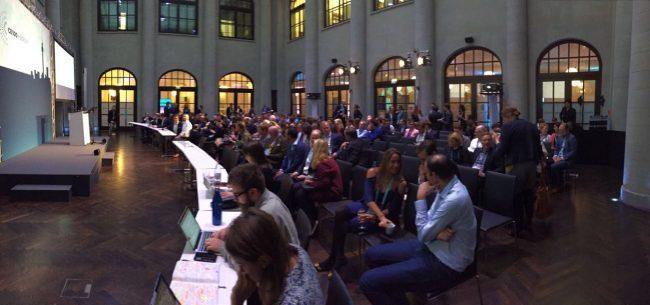Hidden Connections in the Circular Economy
How could one organisations excess capacity be productively used by others? This question underpinned the recent CE100 event in Berlin, focussed on the Circular Economy and organised by the Ellen Macarthur Foundation. It attracted over 200 senior people from all around the world and I was very impressed with the calibre of the programme and the organisations represented.

I used my breakout ‘toolbox’ session to focus on surfacing new connections in the room. In particular looking for data, skills, resources, assets, techniques, materials that organisations can give and get from each other for mutual benefit. Firstly we discussed some examples of hidden connections between organisations from some of our previous work including the following:
- EDF Energy had to shut down their power stations at a cost of £1m per day because heat vents were getting blocked by jellyfish. Until they met an academic from the University of Surrey who had tracked the migratory patterns of jellyfish around the UK.
- Interface use discarded fishing nets to transform into industrial grade nylon which in turn is used to carpet 60% of the worlds offices. This provided a new revenue stream for fishing communities and helped Interface towards their Mission Zero goal by 2020.
- Orange reduced the time it takes to put up a mobile phone from 3 weeks to 2 days. An employee heard about this challenge and then visited his mum who lived opposite a stadium and he observed how they replaced floodlights in 48 hours so went to find out how.
- NATS used predictive software technology developed in Formula 1 racing to increase the predictive capacity of air traffic controllers from 10 minutes to 2 hours. This has lead to a major new joint venture and the tool is now used in Heathrow and Hong Kong airports.
- E.ON used spare roof capacity of Royal Mail depots to place solar panels to generate renewable energy and a new revenue stream. This enabled more local renewable energy generation and new revenue streams to cover the costs of running existing assets.
- Premier Foods use the byproduct of the bread making process, and techniques from textile weaving, to produce Quorn. Waving techniques were applied to a waste mushroom fungus to produce one of the fastest growing food brands in the world.
- Red Cross used material science developed at CERN to produce better drop bags for use in disaster relief zones. These have been tested and are now being implemented and have significantly increased the reliability of delivery of foods and medicines to disaster relief zones.
Then we used the Give Get exercise from our open innovation toolkit to surface some more hidden connections amongst delegates in the room which was fun and productive, and led to some enthusiastic swapping of business cards. In essence how can the outputs of one organisations could form inputs of another organisation in the room. This is what I believe the circular economy is all about. What is necessary next is to build the networks, like CE100, and in parallel build the tools to surface more unexpected and hidden connections at scale.